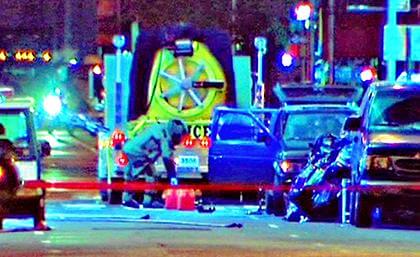By Connor Adams Sheets
New York City is on edge in the wake of the second serious terrorist attempt since September to be thwarted at the last minute.
In the tense days since May 1, when a smoking Nissan Pathfinder was spotted by a T-shirt vendor in Times Square and found to contain a poorly made car bomb of propane, gasoline, fertilizer and fireworks, it seems there has been a bomb scare nearly every day.
From suspicions about a bag filled with clothing and a cooler of bottled water in Times Square to a vehicle abandoned on the Robert F. Kennedy Bridge and Monday’s bomb threat against the Staten Island Ferry, the threat of terrorism is more palpable in the city than it has been at any time since 9/11.
The city’s academic community is taking a hard look at this phenomenon and asking why New York City, and Queens in particular, has become a sort of breeding ground for homegrown terrorists.
Three Flushing men have pleaded guilty this year to terrorism charges: Najibullah Zazi and Zarein Ahmedzay in connection with last September’s attempted plot to bomb the New York City subway system and Syed Hashmi for conspiracy to provide material support to Al Qaeda. Adis Medunjanin, a fellow student at Flushing High School of Zazi and Ahmedzay, is charged with assisting his friends in the subway plot but maintains his innocence.
Faisal Shahzad, the Pakistani American who has admitted to plotting the failed Times Square car bombing, lived in Connecticut, but a coincidental indirect Queens connection may exist through his wife, who grew up in Aurora, Colo., where Zazi lived at the time of his arrest.
Mucahit Bilici, an assistant professor of sociology at John Jay College of Criminal Justice in Manhattan who has done research on the cultural settlement of Islam in the United States and the tension between Muslim and American life, identifies a number of factors that can lead to the radicalization of some of the city’s Muslims.
One aspect of Queens that makes it ideal for disenfranchisement is the compartmentalization of the borough’s population into segregated racial pockets.
“Immigrant Muslims in smaller places tend to integrate better with their American environment. Those in New York also integrate, but not to a generic American environment, since such an environment is arguably not available in New York,” Bilici said in an e-mail. “Instead they integrate with ethnic communities not strongly linked to their American environment.”
Muslims in other areas of the country, such as Detroit, an area Bilici has researched extensively, have more time and opportunity to mingle with people of other backgrounds and to expand their social lives, he said.
Bilici and Anny Bakalian, associate director of the Middle Eastern and Middle Eastern American Center at the CUNY Graduate Center, agree that American military and political intervention in Iraq, Pakistan and Afghanistan contributes to the sense of disconnect with society that can open the door to fanaticism.
“No doubt there are influences from overseas. With the U.S. government in the region, people find issues with U.S. policies and they see it in some kind of discriminatory way,” Bakalian said. “The alienation, I don’t know what to tell you. It happens everywhere.”
These issues, along with other situations unique to New York, such as the “harsh urban realities of economy, competition, indifference and formality,” all contribute to a sense of alienation and purposelessness, Bilici said.
“Muslim individuals who are part of the social fabric but then lose that connection look for ways to blame the environment in order to maintain their moral sense of worth,” he said via e-mail. “It is in such moments that [overseas] discourses of anti-Americanism or terror find resonance with them.”
Reach reporter Connor Adams Sheets by e-mail at csheets@cnglocal.com or by phone at 718-260-4538.

































